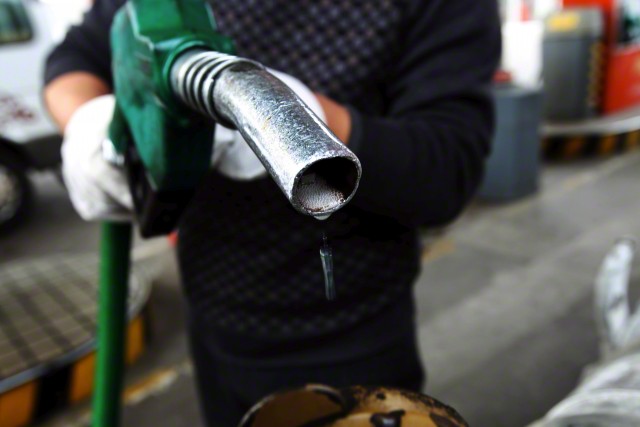This breakdown gives a snapshot of how the cost of every litre of petrol inland, and at the coast, is determined.

To understand how the fuel price is comprised, the Automobile Association (AA) is publishing a fuel price breakdown for the third year.

.
This breakdown gives a snapshot of how the cost of every litre of petrol inland, and at the coast, is determined.
These figures are based on 93 unleaded octane fuel (inland) and 95 octane fuel (coastal).
The purpose of the breakdown, and accompanying infographics, is aimed at educating the public about why a litre of fuel costs what it does, and where the money spent is being allocated.
At the beginning of April, road users across the country paid between 69 cents and 72 cents more for a litre of fuel at the pumps.
This massive increase was due to a number factors: strengthening international petroleum prices, and the addition of 52 cents to the fuel levies.
These fuel levies are mainly in the form of two indirect taxes: the General Fuel Levy, and the Road Accident Fund (RAF) Levy.
The increases to these levies was announced by former Finance Minister Malusi Gigaba in his Budget Speech in February, but only came into effect at the beginning of the month.
Ahead of the announcement by the then finance minister, the AA warned that any increase above inflation would hurt the poorest of the poor in the country. This is because many people rely on public transport which, if the price of fuel increases, will need to recover these costs by passing them on to consumers.

.
Another factor to consider is that increases to fuel prices means goods transport across the country also become more expensive as operators seek to recover the increases by again passing these on to consumers.
Essentially, in our view, more expensive fuel means more expensive transport and goods for consumers, who this year, are also faced with a one percentage point increase in the Value Added Tax (VAT) rate.
The fuel price is comprised of four main elements. These are:
- the General Fuel Levy;
- the RAF Levy;
- the Basic Fuel Price (freight and insurance costs, cargo dues, storage and financing);
- wholesale and retail margins, and distribution and transport costs.
The General Fuel Levy is a tax charged on every litre of petrol sold. In April 2016, the General Fuel Levy increased from R2,55 to R2,85. Last year, this levy again increased by 30 cents from R2,85 to R3,15.
This year it increased by 22 cents and now stands at R3,37 a litre. The money collected through this tax is administered by the National Treasury, and is treated as a general tax and not, as many people assume, for road-related expenses.
Money collected through the RAF Levy portion of every litre of petrol sold is used to fund the Road Accident Fund, which uses the money to compensate victims of road accidents. In 2016, the RAF Levy was R1,54 (unchanged from 2015). In 2017 it rose by nine cents to R1,63. This year the RAF Levy increase was a sizable 30 cents and now stands at R1,93 a litre.
Combined, the General Fuel Levy and the RAF Levy constitute R5,30 of every litre of fuel sold in the country. So, if a litre of fuel inland (93 unleaded octane) costs R14,23, then 37% of this amount is tax. Similarly, if a litre of fuel at the coast (95 octane) costs R13,89, then 38% is tax. The difference between inland and coastal fuel prices is mainly due to transport costs of the fuel from depots at the coat to inland outlets.
In South Africa, the price of fuel is adjusted monthly based on a number of factors, mainly international petroleum prices, and the Rand / US Dollar exchange rate.
The Basic Fuel Price (BFP) is calculated based on costs associated with shipping petroleum products to South Africa from the Mediterrean area, Arab Gulf, and Singapore. These costs include insurance, storage, and wharfage (the cost to harbour facilities when off-loading petroleum products into storage). The current BFP is R5,81.
Other costs associated with the petrol price include transport costs (from the harbour to inland areas), customs and excise duties, retail margins paid to fuel station owners, and secondary storage costs. These costs currently total R3,12 for inland petrol, and R2,78 for coastal petrol.
Movements in these costs the past 12 months include an additional 10 cents a litre charge in transport for fuel from coastal areas to Gauteng, and an 11 cents a litre increase in the retail margin at both inland and coastal stations.
Using this data, filling a 50 litre tank with 93 unleaded petrol inland will cost R711,50. This is comprised of the Fuel Levy – R3,37 x 50l (R168,50), RAF levy – R1,93 x 50l (R96,50), associated costs – R3,12 x 50l (R156), and the Basic Fuel Price – R5,81 x 50l (R290,50).
Depending on whether the BFP increases or decreases during April going into May, a calculation that still needs to be done, the price of a litre of petrol could either increase or decrease. However, given the current increased international petroleum prices, and the volatility of the Rand against the US Dollar, it is likely the price of a litre of petrol will increase, in the short term at least.
The AA releases a prediction for the change in the fuel price in the middle of every month, and again at the end of the month, ahead of the official announcement by government.
//






